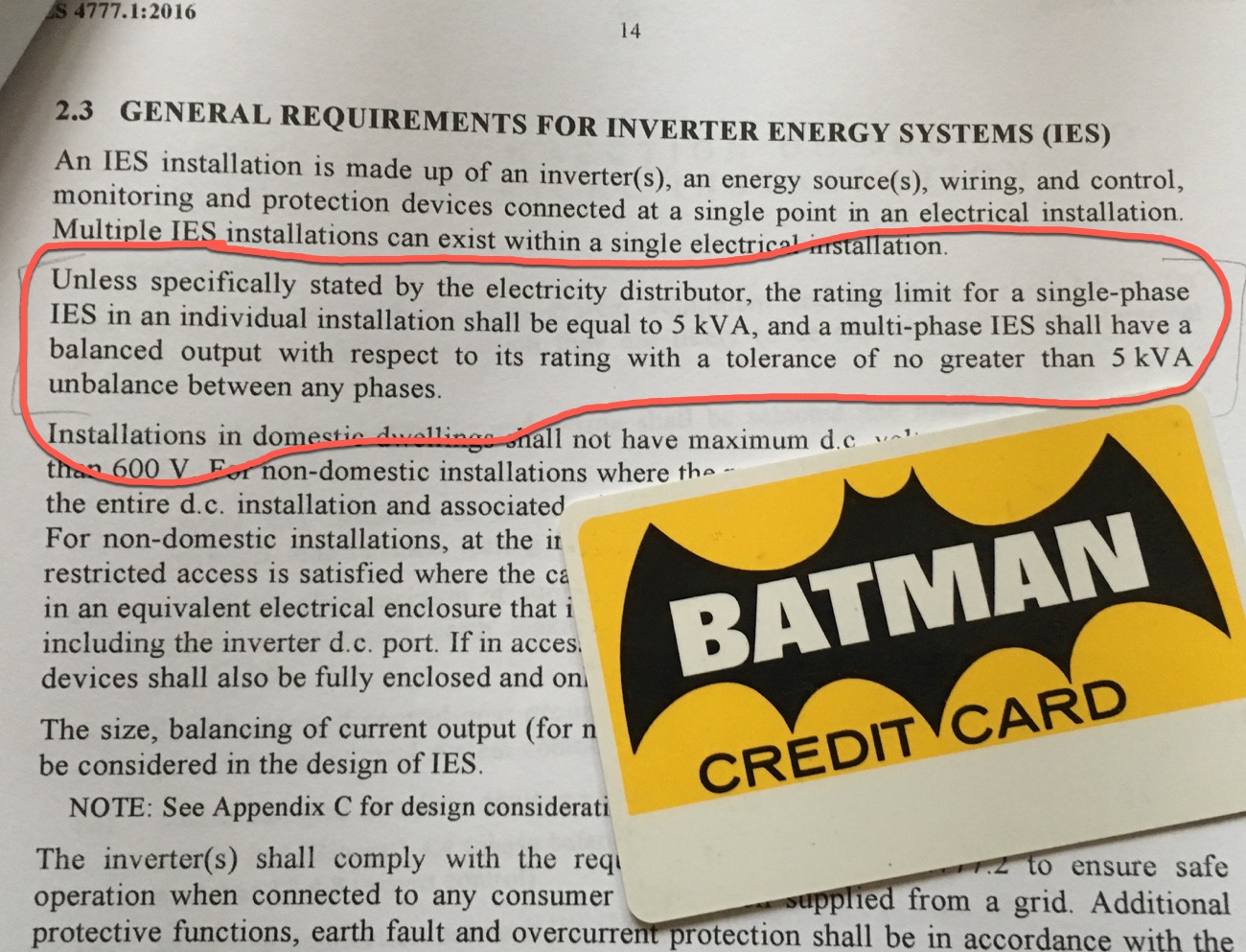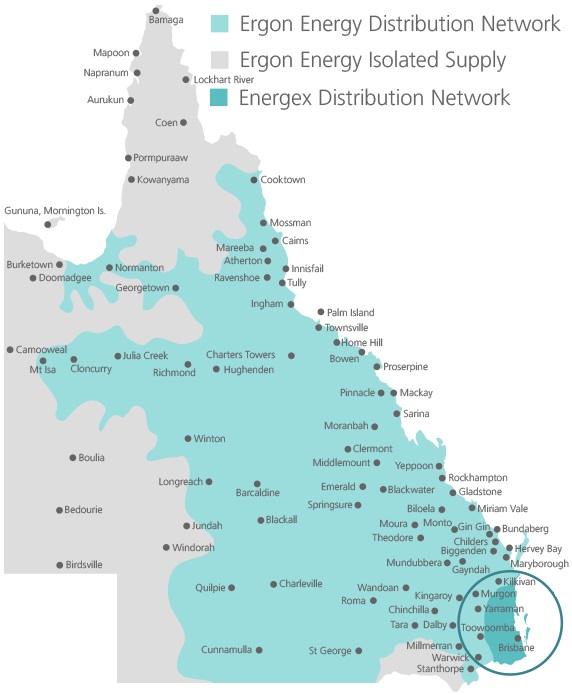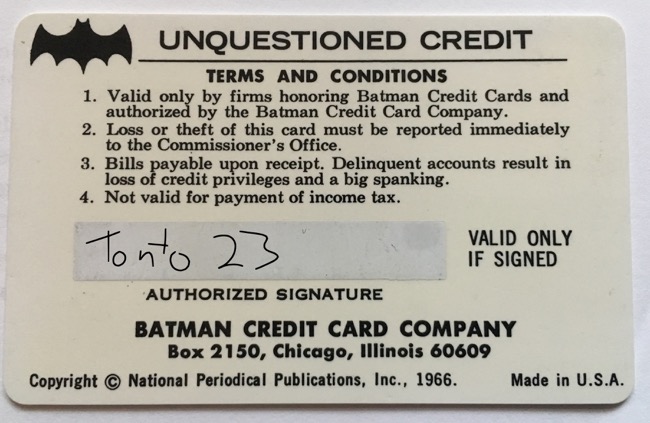
Good news for Queenslanders who want to install a battery or a bigger solar inverter.
There is good news for Queenslanders looking to install rooftop solar and anyone thinking of of installing AC coupled battery systems such as the Powerwall 2.
Energex and Ergon, the two Distributed Network Service Providers (DNSPs) in Queensland1, have released an installer alert stating the state’s Connection Standard for Micro-Embedded Generation Units has been revised and approved2.
This is an important and positive change for people who are have single phase power and are on the main grid, which is most Queenslanders. In the past, in order to receive automatic approval for rooftop solar, they had to install an inverter with a capacity of 5 kilowatts or less, but now automatic approval will also apply for inverters from over 5 kilowatts and up to 10 kilowatts, provided it is export limited so it never provides more than 5 kilowatts of power to the grid3
This gives people with single phase power installing new rooftop solar systems in Queensland the option of installing larger systems than they did before. Instead of being limited to a 5 kilowatt inverter and a maximum of 6.66 kilowatts of solar panels they could now install up to a 10 kilowatt inverter (export limited) and 13.33 kilowatts of panels, provided the local council allows it and it’s possible to fit that much on the roof.
It also means households that have rooftop solar can install AC coupled batteries. For example, a home with single phase power and a 5 kilowatt solar inverter could install an AC coupled battery system with a 5 kilowatt battery inverter, such as the Powerwall 2.
Unfortunately, people currently receiving the old 44 cent solar feed-in tariff will lose it if they do anything to increase their total inverter capacity, including adding an AC coupled battery inverter.
Because DNSPs such as Energex and Ergon are permitted to make exceptions, this means Queenslanders are not bound by Section 2.3: Paragraph 2 of the revised, and eye-wateringly expensive, Australian Standard for Grid Connection of Energy Systems by Inverters4, which only allowed for a total of 5 kilowatts of inverters per phase.

The AS4777.1 clause and the Batman Credit Card I used so I could afford the ridiculous $204 for the Australian Standard pdf.
Energex Covers The SE Corner Of QLD & Ergon Covers The Rest
Energex only covers a small part of the state in the south-east, but it is where the majority of Queenslanders live, as they cluster together for mutual protection from drop bear attacks. Ergon covers the portion of the population that is forced to take a philosophical approach to the question of whether or not God can make a spider large enough to scare the bejesus out of himself.
This map that I stole from Energex shows the areas they cover:

Energex is the darkly shaded part inside the circle. Everything else is Ergon.
Main Grid, SWER, And Isolated Networks
If you are in or near a city or major town, then you are probably on the main grid.
If you are in a rural area with a low population density then chances are you are on Single Wire Earth Return (SWER) transmission, which is a low cost method of transmitting modest amounts of electricity long distances. You will suffer stricter requirements and only receive automatic approval if your total inverter capacity is 2 kilowatts or less or if it is export limited to 2 kilowatts.
If you live in the middle of nowhere then you are most likely off-grid, but you may be part of a small isolated network where you can’t do anything without first getting permission via a “manual assessment” as opposed to an “automated assessment”.
Export Limitation
Normally electricity produced by rooftop solar that isn’t used by the building it is bolted onto gets sent into the grid for other people to use, which reduces the amount of fossil fuel burned to produce electricity.
But those in charge of the grid don’t necessarily like electricity being sent into the grid, which sounds kind of ridiculous. To be more specific, they don’t necessarily like electricity being sent into the grid from rooftop solar, as it can result in them having to update some of their equipment. Now I can see how that could be annoying, but I don’t really see how it ranks up there with “melting the icecaps” on the scale of inconveniences.
But since the distributors don’t like it, they can require solar systems be export limited. This already happens in rural areas and in Queensland there are a considerable number of businesses, churches, and other buildings that are restricted to zero export, which results in clean, green solar electricity going to waste.
One fairly obvious drawback of export limitation is that no feed-in tariff is received for electricity that is wasted.
DC Coupled Batteries Vs AC Coupled Batteries
There are two main ways to connect, or couple, batteries to a house. They are DC coupling and AC coupling.
With DC coupling the solar panels and batteries share the same inverter, so this method allows batteries to be added without increasing the total inverter capacity. But this requires a special mulitmode inverter, also known as a hybrid inverter, which costs considerably more to buy and install than a standard solar inverter.
To get around the need to throw out the old inverter and install an expensive new mulitmode one, batteries can be added to a home with an existing solar system by AC coupling them. This involves them having their own battery inverter.
If Queensland had stuck to the revised Australian Standards with their limit of 5 kilowatts of total inverter capacity it would have been impossible for a home with single phase power to install a Powerwall 2 as it has a 5 kilowatt battery inverter.
Well, they could have installed it by tearing out any existing solar inverter, but that kind of defeats the purpose.
Electric Cars
If an electric car only ever takes power and never supplies any back to the grid, then they are considered to be just a very large appliance with wheels and the rules for inverter capacity don’t apply to them. But if they do supply electricity back to the grid then the inverter limits do apply. So Energex and Ergon are discouraging something that could become a very useful grid management tool in the future.
I look forward to the day when they start looking ahead to at least the late 20th century.
Being “Manually Assessed” Is An Option
If you wish to install a system that doesn’t meet with automatic approval you can choose to be “manually assessed”. This process involves Energex or Ergon using actual human beings to decide if they will let you do what you want. I’m sure the process of being manually assessed is exactly as much fun as it sounds and if you decide to follow this route, good luck. I’m sure you’ll need it.
But be warned, it seems very clear the only way single phase homes will be allowed to export more than 5 kilowatts is if they upgrade to 3 phase power and that is not something that is cheap to do.
Footnotes
- While they cover different geographical areas, Energex and Ergon have officially been fused into one organization. For the benefit of those who need everything explained to them in terms of Arnold Schwarzenegger action movies, Energex is George in this relationship and Ergon is his brother, Kuato. ↩
- You can download the whole thing from the first paragraph of the installer alert if you like. ↩
- The additional good news is a large solar system with a 6 or 7 kilowatt inverter that is export limited to 5 kilowatts will end up wasting much less solar electricity than you’d probably expect. This is because rooftop solar system rarely operate at or near the full potential output of their solar panels and also because households normally consume a portion of the electricity produced. Currently in Queensland and most of Australia, total solar panel capacity can be one-third larger than inverter capacity. And having this much extra panel capacity works very well because, as I’ve written before, little to no output is lost as a result. ↩
- If you would like to look up the revised Australian Standard online, forget about it. They went through a lot of effort to make that standard and they are not about to let common folk sully it with their eyeball juice by posting it online where anyone could read it. You’ll have to put $204 on your Batman Credit Card like I did so you can afford to pay for a hobbled ‘print once’ PDF. Here are the terms of the card if you need to get one to buy your own ridiculously priced Australian Standard
↩


 RSS - Posts
RSS - Posts



That is really good news is their any change to the Feed in [Export] currently at 0.07448 kWh if your your system PV + Battery exceeds 5 kW on single phase?
Your 7.448 cent feed-in tariff will remain the same. It should in fact be increasing as the wholesale price of electricity has gone up.
what a great site, it’s the only way to understand the complex issues of solar power, keep up the good work
This gives me some hope. I really wish Victoria will adopt a similar raise of limit for single phase homes. As it is I’m stuck with a 3 kW system and it doesn’t make it too cost effective to bump up a 3 year old system to a 5 kW.
Do you mean in ergon area
single phase customer can install 10kw inverter with export limitor at 3 or 5kw and remaining they can store in batteries?
Hello Viv. If you are on the main grid, that is, in or next to a city or decent sized town, and you have single phase power, then you can install inverters that total up to 10 kilowatts provided your system is export limited to 5 kilowatts. This means you could install a 5 kilowatt solar inverter and a 5 kilowatt battery inverter, such as the one in the Powerwall 2.
Or, if someone wanted to, they could install a 10 kilowatt solar inverter. They wouldn’t be able to AC couple batteries, as they wouldn’t be able to add a battery inverter without going over the limit, but they could DC couple batteries using a mulitmode inveter. (Also known as a hybrid inverter.)
If you live in a very rural area you will probably be on the SWER network. In this case you can still install up to 10 kilowatts of inverters but if you install more than 2 kilowatts it must be export limited to 2 kilowatts.
This applies whether you are in the Ergon or Energex areas. (Although there would be very little SWER transmission in the Energex area.)
Thanks for the quick reply.
its good to know that also if customer already have 5kw inverter installed .will it be possible to upgarde with another 5kw hybrid system with batterry backup on zero export?
If a home with single phase power currently has a 5 kilowatt solar inverter, then they can have another 5 kilowatt inverter installed provided that home is export limited to 5 kilowatts. Having the new inverter set to zero export would (should) meet that requirement.
Hi Ronald, why is the Powerwall 2 such an issue because I thought it could be set up completely disconnected from the grid, like, without even the ability to export even if it wanted to but still connected to the solar inverter. Why would this affect the total grid connection in kW?
In my opinion the advantages of residential batteries for the grid far outweigh any potential disadvantages and if people want to spend their own money installing them grid operators shouldn’t get in their way. But Distributed Service Network Providers and I don’t quite see eye to eye on this at the moment.
In Australia the DC Powerwall 2 has been cancelled leaving only the AC Powerwall 2. If the house that uses one is on-grid, the the AC Powerwall 2 will be on-grid. So as far as Energex and Ergon and other Distributed Service Network Providers are concerned its inverter capacity is part of the home’s total inverter capacity.
A DC Powerwall 2 can be DC coupled to a multimode (hybrid) inverter and use its inverter capacity. As it doesn’t have its own inverter it wouldn’t add to the home’s inverter capacity. But it has been cancelled in Australia:
https://www.solarquotes.com.au/blog/tesla-kills-off-dc-powerwall-2-ac-version-delayed/
Thanks Ronald!
Hi Ronald,
I think this Batman Credit card is a fake… I don’t believe this is Tonto’s
signature,,,, and you told me 3 years ago that he was 23 years old,,, so surely
he must be at least 26 by now.
Cheers
john Nielsen,
Shhhhhhhhhhhhhhhhhhhhhhhhh! Don’t tell Australian Standards about the Bat Card!
I’m getting a new one anyway:

And Tonto isn’t 23. He’s the 23rd horse I’ve owned that’s named Tonto!
He’s actually 9 years old.
As you can probably guess, he’s doing quite well for himself in the survival stakes.
I read last year that the limit on inverter size in Qld will increase from 5 to up to 30kw sometime mid 2017. See this link:
https://www.dews.qld.gov.au/electricity/solar/installing/benefits/regional
I have held back my planed solar installation to maybe go bigger after finding out what kind of extra rules Ergon will apply to make this as hard as possible to utilize for Ergon customers.
Is there any more information about this out yet??
People in rural areas can already install solar inverters of up to 30 kilowatts provided they are export limited. But they can be required to have zero export. These large systems will normally have to be ground mounted. In built up areas people with 3 phase power can install more than 10 kilowatts of inverters, but normally run out of roof space for panels long before they hit the inverter limit.
If I could make a suggestion that may help answer what might be the best PV + Battery kW Sizing Solution and that is the soon to be introduced [my understanding] Season Demand Fixed Charges. I have been attempting to model the Momentum Energy Pty Ltd Electricity pricing information (RESKWTOU) that was published on 01-Aug-2016 where fixed demand charges Summer from 1-Dec to 31 May are 31.665 per kW day and Non – Summer 1- Apr to 30- Nov 14.1712 cents per kW per day. The demand charges are calculated from the maximum half hourly interval kW occurring during that month between 3pm and 9pm (local time) Mon-Sun. Our maximum 3:00 – 9:00 pm not seasonally adjusted is for a 30 minute timed interval is approximately max 2.09 kWh and our average out of sunlight consumption is 5.73 kWh.
That might be a stupid question and might already been answered but is the 5 kw export limit is per day?
Hello Rico. The limit is 5 kilowatts of continuous power. So if this maximum was exported for one hour 5 kilowatt-hours of power would have been sent into the grid. So a household with a 5 kilowatt inverter can export all the electricity their system produces without problem.
Without taking away from what Ronald has said. In the case of our Enphase 7.99 kW Micro Inverter System PV Production is first allocated to household consumption then storage [if not fully charged] and then to export [Feed in]. When there is insufficient PV Production to satisfy consumption then the balance first comes first from storage and then the grid. If there is no PV production to cover consumption then it comes first from the battery and then storage. It should be noted that batteries have a charge and discharge rate which in our case is 240 watt-hours. So if the consumption is more than 240 watt-hours then the balance comes from the grid. We have a 7.99 kW system and have never had a situation where the amount of surplus continuous power was more than 5 kW. These were our performance figures for yesterday [midnight to midnight] Consumed 20.58 kWh Produced 32.66 kWh Imported 5.84 kWh Exported 17.65 kWh Stored 1.49 kWh Discharged 1.26 kWh [you never get back the same amount of energy stored] Daily cost without PV including fixed charges $7.02 with PV $1.04. For a zero bill our Export to Import ratio is about 4-5 to 1. Import 0.28479 c kWh and Export [Feed in] 0.10102 kWh. Enphase batteries currently cost $2,200 per 1.2 kW installed and if you do the numbers it is cheaper to have solar production that produces an credit because to right now the cost of production [panels] is cheaper than having panels to charge storage [if that makes sense] In Far North Queensland you can have up to 10 kW per single phase and 30 kW three phase [10 kW] per phase. Basically there are two types of systems DC off the roof converted by a Single Inverter and AC of the roof with individual Inverters attached to each panel. We chose the Micro Inverter because we did not have a situation where all panels could be installed with a northerly aspect. Micro Inverters are not usually subject to overshadowing issues [cloud, trees] affecting production of one any number of panels in the array each have the capacity to produce to their maximum capacity. In a DC setup the production capacity of any one panel can set the maximum production capacity for every other panel. To put it simply a 5 kW micro inverter system should outperform produce more kWh in the same location and orientation when compared with a DC single inverter system. Not only that but they are easier to upgrade because each panel has its own inverter where any upgrade with the other system might require the inverter to be upgraded. I am a user I do not promote Solar to any specification other than we have had an Enphase 5.75 kW system since April 2015 in June 2017 upgraded it to 7.99 kW [Thirty Panels] and on track to reduce our annual bill from about $3,700 to less than $1,000. Our consumption is anywhere between 24 – 35 kWh per day but we run a pool and pool heater 4 bedroom plus under the same roof a 1 bedroom apartment.
What a great blog post, love the tongue in cheek.
I’m currently upgrading my existing system to 11.6kw on the roof (adding 6.6kw panel and another 5kw inverter).
Will pave the way for a battery one day. And a simple process so far and automatic approval from Energex. Only extra necessity is the output limiter which is also being installed on the day.
skip the power conmpany they are never going to help you ..put in batteries and inverter and change over switch ..just use them as a backup, that’s all they are good for.